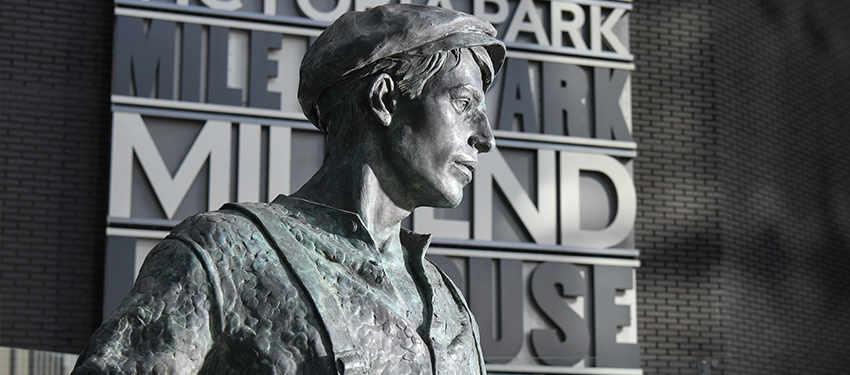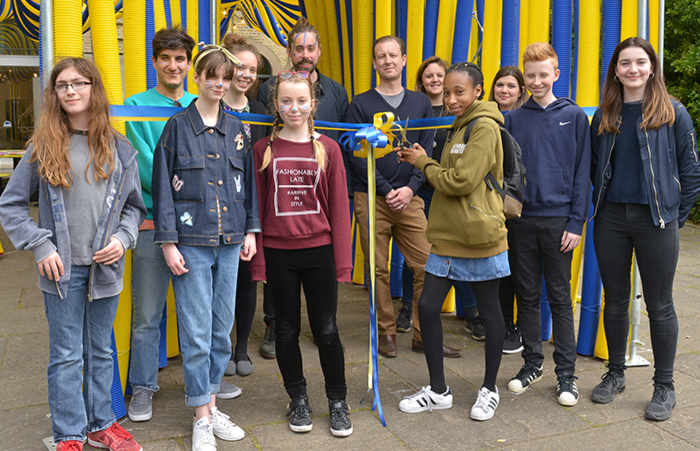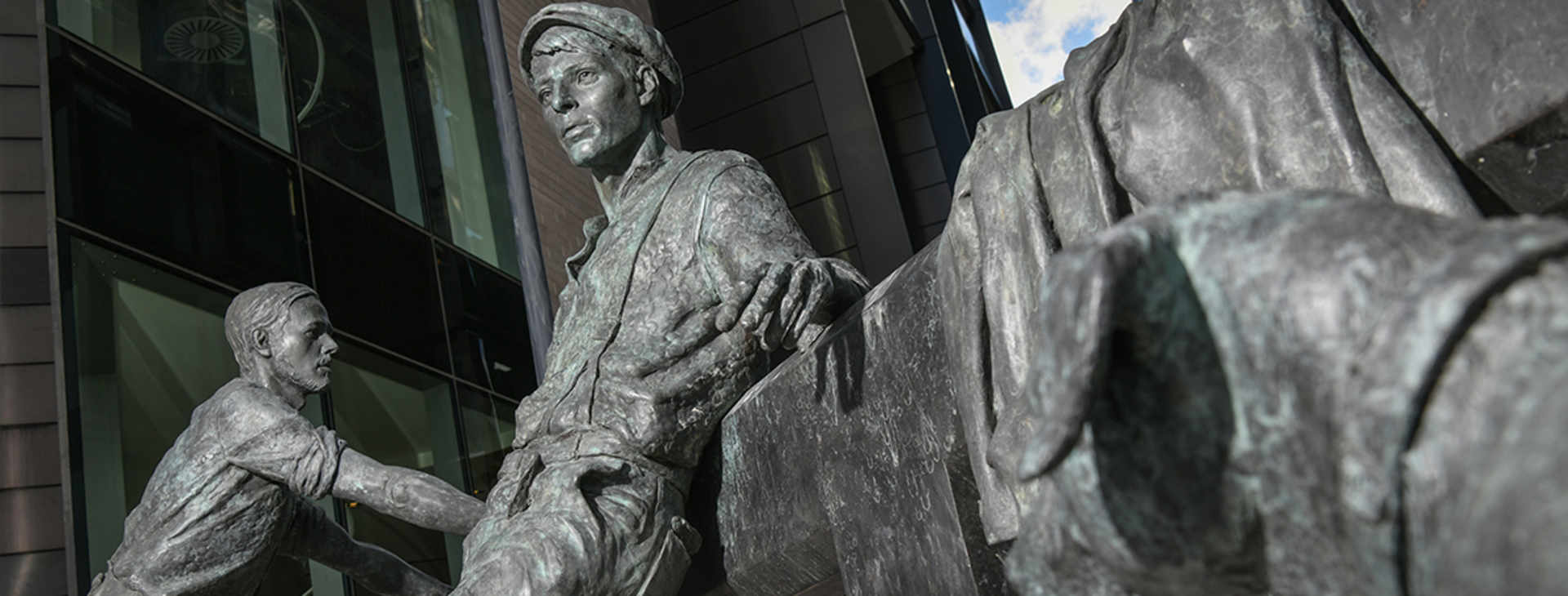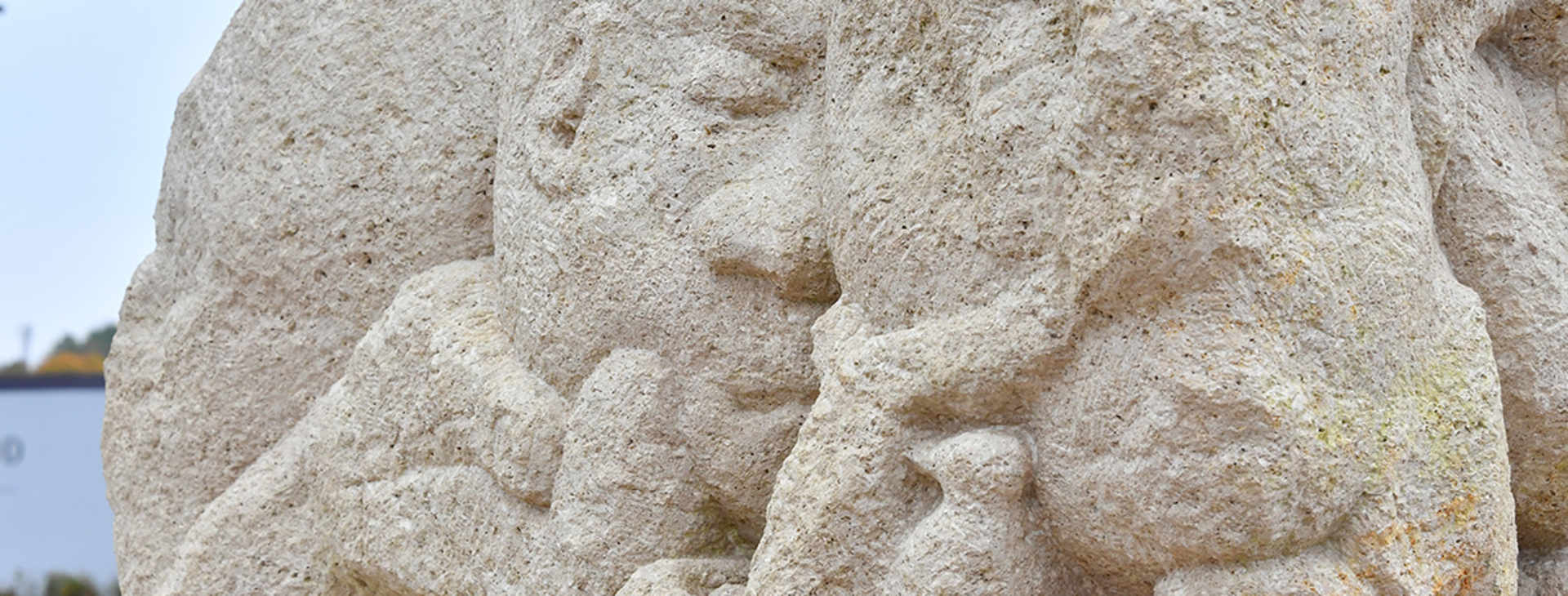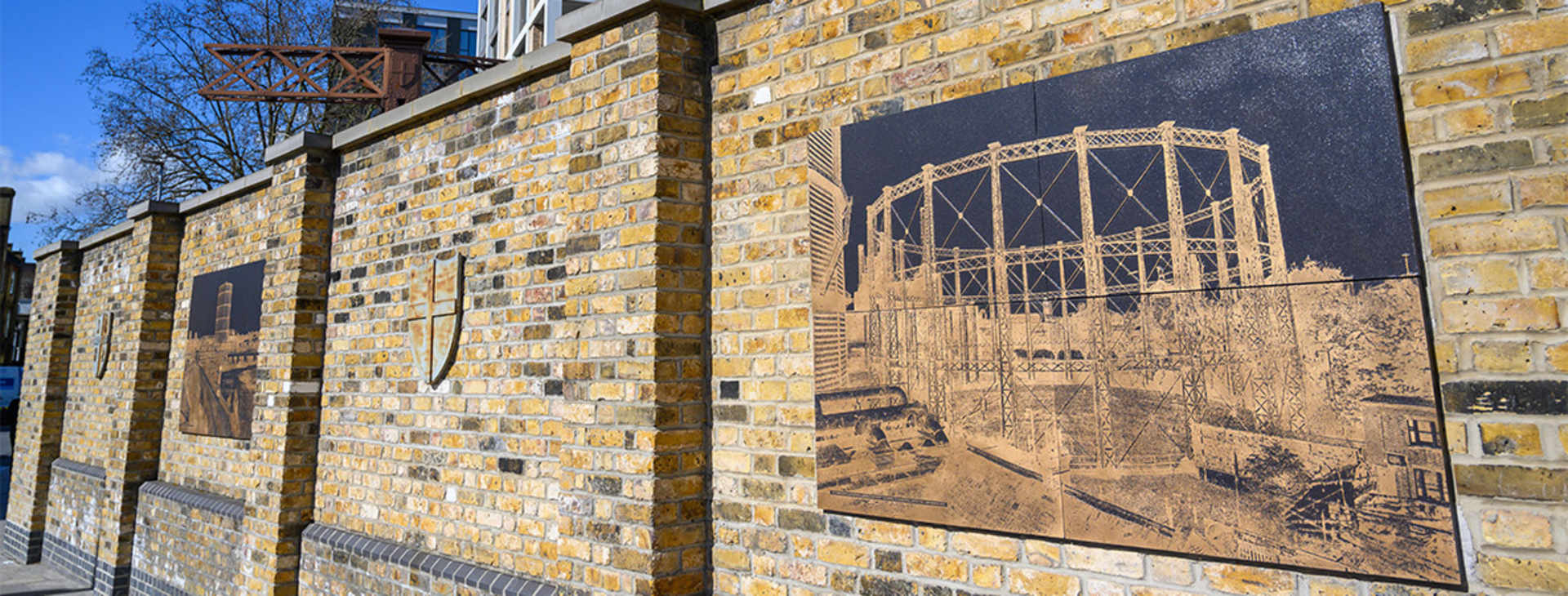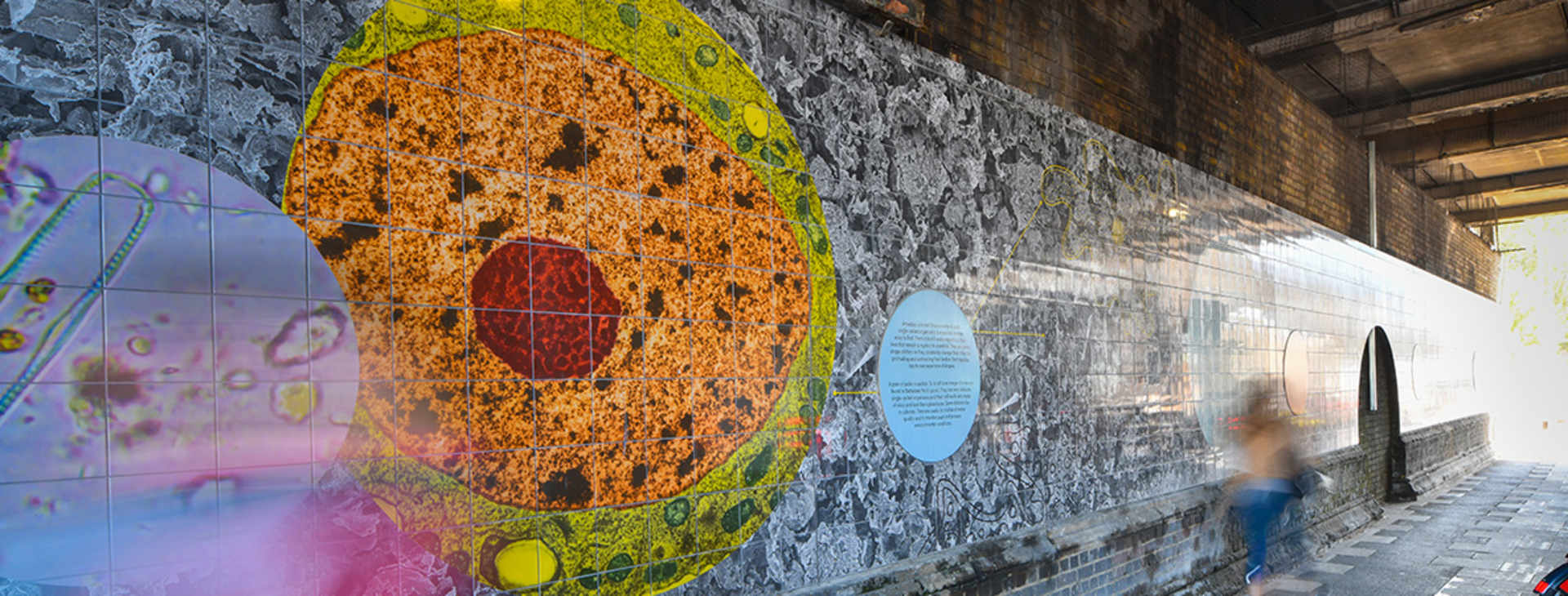Outdoor public artworks are not just fascinating to look at, they can help bring communities together, celebrate local history and lift their surroundings. We examine the vision behind some recent commissions.
Increasingly, public art has become an exciting way to celebrate community and heritage and, when commissioned in a careful and considered way, it can make a thoughtful contribution to the local landscape. As towns and cities change, public art can help to carve out a distinctive identity for a new development, or it can provide an inspirational focus for a fledgling neighbourhood.
Public art can also bring people from different communities together by starting conversations and engaging local residents in their surroundings. From wayfinding, placemaking, or simply acknowledging an area's unique history, public art is a welcome opportunity to provide a stage for local artists, and can very often involve local people in the creative process.
Local schoolchildren helped to create an art installation in Battersea, as part of St William's cultural strategy for Prince of Wales Drive in Wandsworth
The Contemporary Art Society sums it up well in its practical guide to commissioning public art: "Great places benefit from great art. Artists can create distinctive narratives of place, uncovering histories and nuances of sites and communities [while] public art can serve to illustrate, to humanise and to create meaning."
It's an ethos that is shared by Berkeley, which believes commissioning public art can be integral to developing welcoming new places. "At Berkeley, not only do we build homes and places to enjoy living in and visiting, we're passionate about creating beautiful neighbourhoods that revolve around communities, and link the present with the past," says Operations Director Brian McKenzie.
Unlike indoor galleries and museums, public art outdoors is not constrained by walls and ceilings, and this freedom enables endless different mediums - from multimedia, paintings, photography and sculpture to sound, light and kinetics.
But it needs to be the right piece, in the right place. "We've found that interactive public space is fundamental to creating attractive destinations that are truly engaging," agrees Sean Ellis, Chairman, St James. This is why Berkeley's public art commissions are always so carefully considered.
Here, we explore four recent works, and the impact they have had.
Opening the Lockgate by Ian Rank-Broadley (2020), 250 City Road, Islington EC1
The site at 250 City Road was once part of a vast canal basin, lined with busy wharfs and goods yards, and its bold figurative sculptures will show how public art can bring forgotten history back to life. Opening the Lockgate is unapologetically classical in style and has been created by renowned sculptor Ian Rank-Broadley, whose effigy of H.M. Queen Elizabeth II appears on the coins we use every day.
Cast in bronze, the piece is larger than life, and celebrates the history of the 200-year-old Regent's Canal and the men and women who laboured there. The locally inspired sculpture cleverly contributes to the unique identity and character of this location by paying tribute to the working lives of Londoners and acknowledging how they contributed to the capital's enduring prosperity.
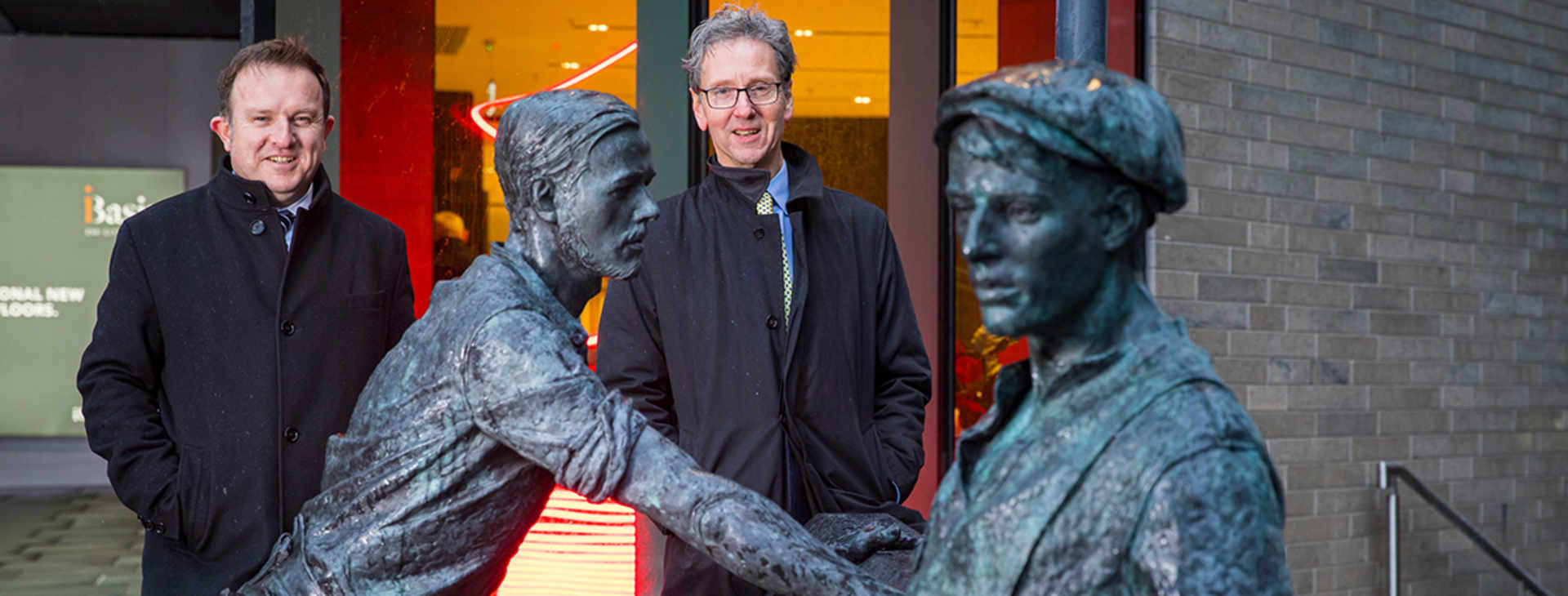
Ian Rank-Broadley (right) with the artwork
Centuries-old techniques of hand-made armatures, clay modelling and casting were used, allowing Ian to create highly detailed human figures that resonate with passers-by. "It is my intention as the sculptor to portray the working lives of these people with dignity and create a lasting tribute," says Rank-Broadley.
"Bronze will last a thousand years or more, and so now can the memory of the canals." Another two sculptures from Rank-Broadley will follow soon.
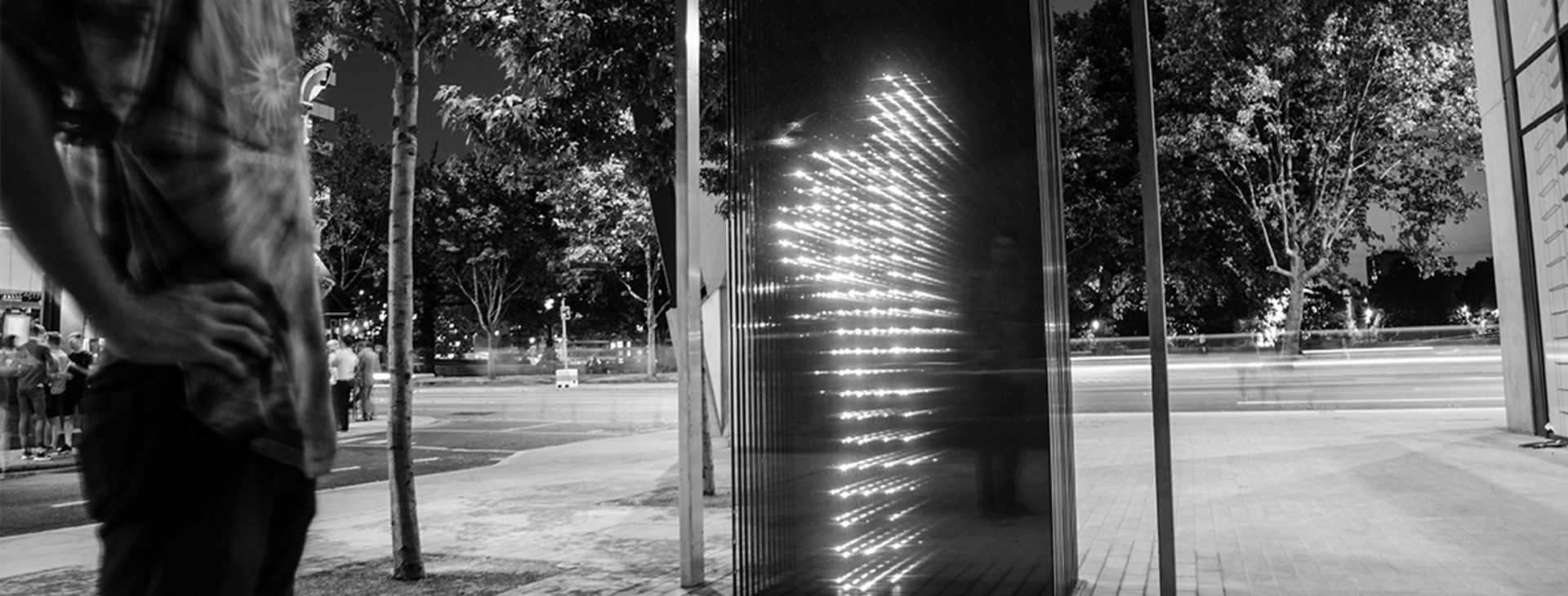
Self & Other (for the Albert Embankment) by Random International (2018), Merano Residences, Albert Embankment, SE1
Interactive artworks can really capture the public imagination, such as Self & Other, which is delighting local people and passers-by on London's Albert Embankment. Now installed next to St James' Merano Residences, it's a UK first for Random International, aka artists Florian Ortkrass and Hannes Koch.
The appeal of the piece lies in its responsive nature: the onlooker's full-length reflection is translated into points of light, distributed three dimensionally and embedded within layers of glass. As the onlooker moves, an illuminated reflection follows with a slight delay. This creates an intriguing response, somewhere between the live reflection of a mirror and the static image of a photograph.
"Permanent public works can provide a platform in an entirely different environment for a broader audience," explain Ortkrass and Koch. "Unlike works that are displayed in a museum or gallery, these pieces encourage unintended participation from passers-by, inviting us to engage with both the work and one another in unexpected ways."
St James' Chairman Sean Ellis is thrilled that the installation also contributes to the dynamic extension of London's world-famous South Bank. "We're incredibly proud to have selected London-based artists to create spectacular works of art for this fantastic new development."
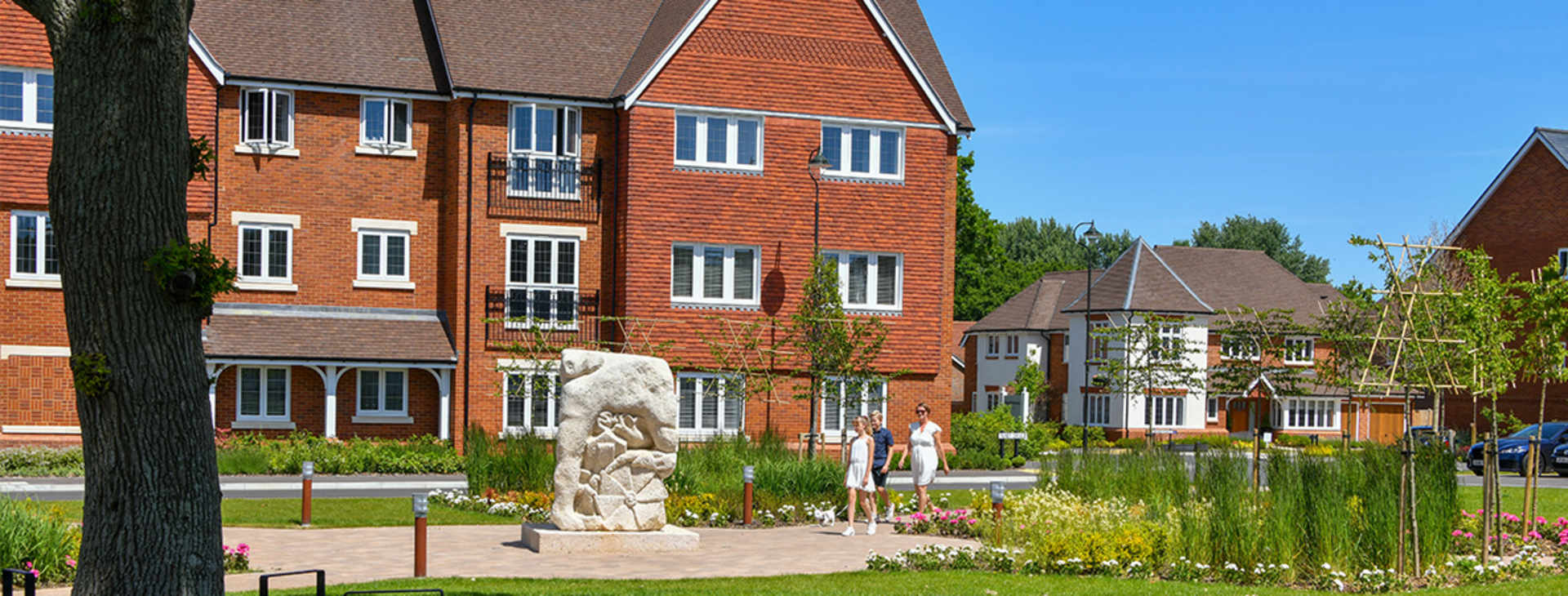
Fluvius by Jon Edgar (2019), Highwood Village, Horsham, West Sussex
The artwork commissioned by Berkeley Homes for Landmark Square in Highwood Village had the added benefit of involving contributions from the residents themselves. Local artist Jon Edgar led the project by sculpting an eight-tonne block of limestone by hand over the course of a year. But he was also supported by the Horsham community, who practised their new carving skills with a chisel and mallet. By contributing, they helped to shape and design a truly unique piece of public art.
What was particularly exciting was the way Fluvius was conceived: the design was not pre-planned or 'fixed' in advance. Instead, the broad concept of archiving the area's history on stone evolved into a rich programme of community engagement, and involved existing and potential Highwood Village residents at the site where the sculpture would ultimately be displayed.
"The sculpture is for the local community to enjoy, and we were delighted that they were so hands-on with its creation," says Ben Annetts, Sales and Marketing Director at Berkeley Southern.
Now, the end result acknowledges the Portland stone which was laid down in West Sussex some 145 million years ago, as well as local oak trees, the mills on nearby rivers, and resident birdlife.
Historic gasholder fragment, plaques and etchings; Prince of Wales Drive, Battersea SW11
The artworks at the new Prince of Wales Drive development in Battersea form part of a cultural strategy for the whole area. Inspired by the 19th-century gasholders that once stood on the site, St William in partnership with National Grid have reconditioned three sections of 'Gasholder 6' built in 1882, which have now been placed at the front of the development. On the exterior walls, original wrought-iron plaques from the gasholders also celebrate the area's industrial heritage, as well as beautiful bronze etchings depicting the history of the site.
Alongside this was an idea to commission a contemporary artwork to transform a nearby neglected railway arch and contribute to the regeneration of the wider area. Argentinian-born, London-based artist Amalia Pica created Microscopic Park Life, a digitally printed, wall-mounted porcelain tiled mural, which offers a welcoming transition from Battersea Park to Prince of Wales Drive.
Inspiration came from Battersea Park's diverse ecosystem, and saw Pica and microbiologist Joanne Santini collecting samples of water and soil from the Park.
Pica then recreated patterns and organisms from nature in colourful detail, but in a fascinating and abstract way.
Microscopic Park Life by Amalia Pica (2018), Prince of Wales Drive, Battersea SW11
The resulting artwork will definitely intrigue passers-by. "This has been a fantastic opportunity to transform a challenging, dark neglected public thoroughfare and instigate the creation of a new artist commission," says David Pierce from Berkeley's architecture studio partner, Dallas-Pierce-Quintero. "Collaborating with Amalia on Microscopic Park Life has been very positive."
